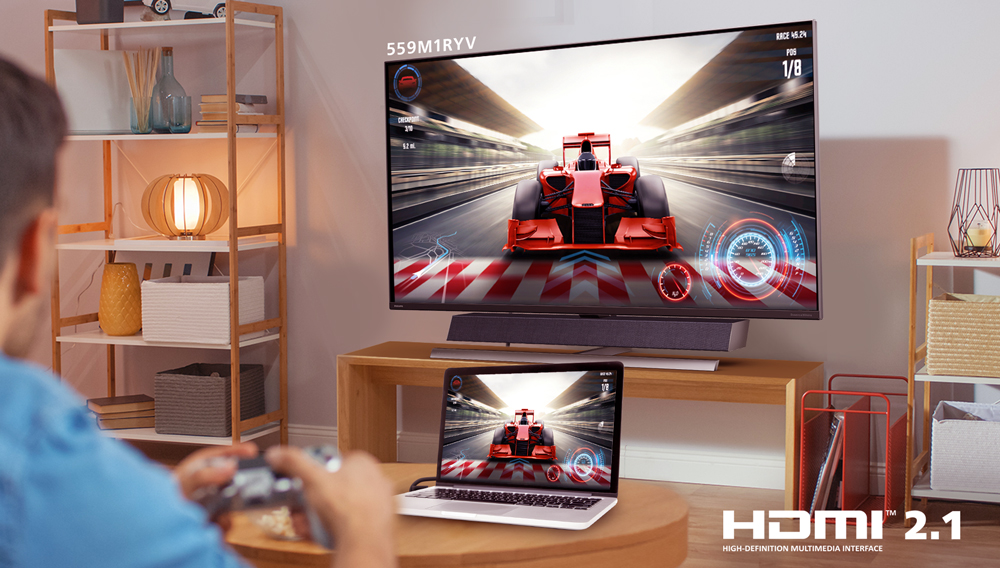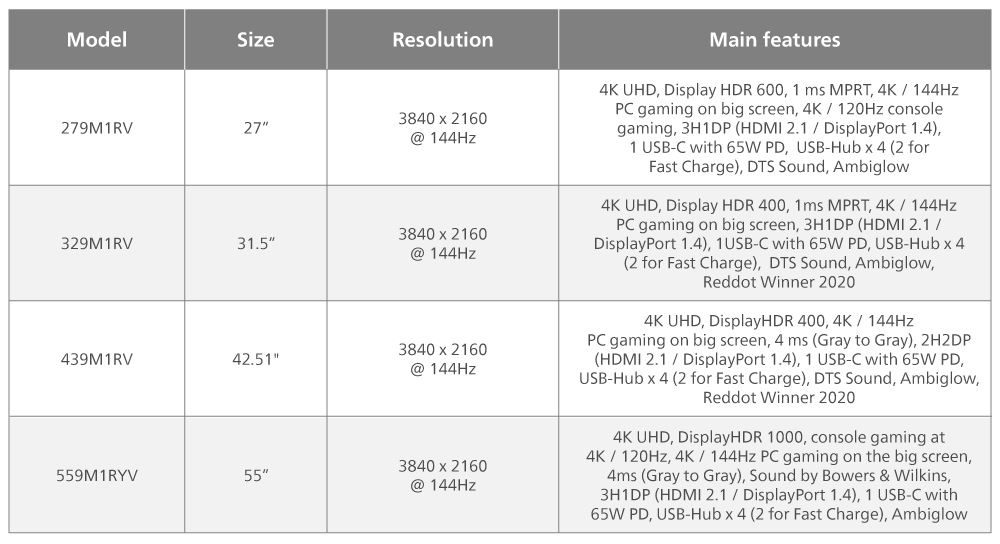![]() 2021/12/10 | MMDInnovationHub
2021/12/10 | MMDInnovationHub
Online games typically use up a bandwidth of around 40MB to 150MB of data per hour, depending on the game. However, due to bandwidth limitation, monitors with HDMI 2.0 can only support 4K resolution at a 60Hz refresh rate. Typically, if a gamer wanted to experience 4K resolution in 120Hz refresh rate which enables ultra-fast motion UHD images to be crisp and razor sharp, they’ll have to use a monitor with DisplayPort 1.4.
Now, however, there’s HDMI 2.1.
Do you need HDMI 2.1?
Yes, if you are serious about gaming. With the release of next-generation consoles like the PS5 and Xbox Series X, HDMI 2.1 gaming monitors have become a hot topic, so much so they’ve been dubbed “one of the most exciting enhancements in connectivity in recent years.” Let us tell you why.
HDMI 2.1 gaming monitors make such a fantastic option for gamers because they offer higher resolutions and frame rates. While these features aren’t for most people, they’re a must-have for serious gamers.
 HDMI 2.1 supports a range of higher video resolutions and refresh rates.
HDMI 2.1 supports a range of higher video resolutions and refresh rates.
Currently, gamers can only get a 4K resolution output at more than 60fps by using PCs, high-end gaming rigs, the PS5 and Xbox Series X. Philips’ new HDMI 2.1 monitors from our Momentum M1 Series, feature 48Gbps which is a bandwidth that is three times higher than HDMI 2.0 at 18Gbps. This, and its Fixed Rate Link (FRL), supports a range of higher video resolutions and refresh rates including 4K@120Hz, 8K@60Hz, and resolutions up to 10K.
More Fluid Gameplay with Superior Image Quality
In addition, the connectivity of HDMI 2.1 gaming monitors enables gamers to connect two or more of their favorite gaming systems, like a PC and console, to a single display. Other advantages of HDMI 2.1 monitors are their Variable Refresh Rate (VRR) and Dynamic HDR formats.
 Experience smoother gameplay with HDMI 2.1 on the 559M1RYV.
Experience smoother gameplay with HDMI 2.1 on the 559M1RYV.
VRR, which is also known as Adaptive Sync, syncs the output from your console to what is displayed on your monitor. VRR produces a more fluid and better detailed gameplay experience by continually changing the refresh rate, up to a frame-by-frame basis.
This helps reduce or eliminate game interaction lag, frame stutter, skipping, and freezing, as well as frame tearing. Meanwhile, Dynamic HDR offers an ultra-crisp and vibrant image quality to get you in the moment. All models in the Momentum M1 Series features Dynamic HDR –which are the 279M1RV (VESA-certified DisplayHDR 600), 329M1RV and 439M1RV (DisplayHDR 400) and 559M1RYV (DisplayHDR 1000).
Philips’ HDMI 2.1 gaming monitors from its Momentum M1 Series are available in a range of sizes and features:
